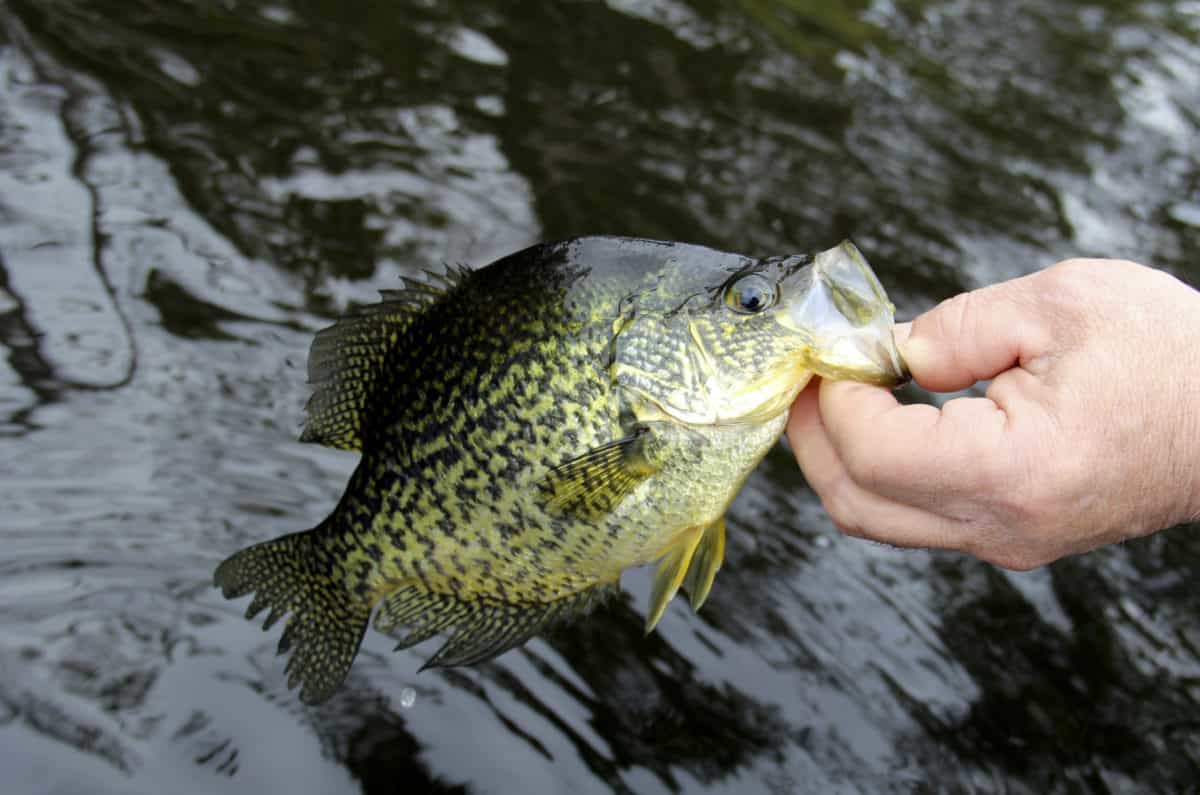Can I catch crappie from the bank?
Fishing from the bank is a great way for anglers to catch crappie! crappie can be caught year-round and a boat is not needed to be successful. From jigging to fishing live bait under a bobber, you can catch a lot of crappie from the shore.
Whether you are fishing from the bank in a local lake or a neighborhood pond, there are techniques and tactics found in this article that will help you catch more crappie.
Does it matter what time of year?
While anglers can catch crappie during any time of the year, there are certain aspects to consider depending on the season and weather conditions.
As a rule of thumb, crappie move to deeper water as the temperature gets colder and to the shallows as it gets hotter. This is because the crappie start to move into the shallow water to spawn as the water temperature starts to rise.
Also consider that in the thick of the summer when the water temperature starts to rise above 75 degrees, crappie will start to move into deeper channels to find cooler water.
Once they start to move into the deeper water, they tend to stay deep and will not move shallow until the temperature starts to rise. The ideal water temperature for crappie is about 50-60 degrees.
It is important to know this while fishing from the bank because if you are fishing in the winter months you will have to be able to make longer casts to get to the deeper water.
In the spring it is important to be on the lookout for spawning beds, which should be close to the bank where you are fishing. Be sure you are quiet so you do not scare the fish!
Crappie Fishing Techniques
There are certain techniques and tactics for catching crappie that work best depending on the time of year.
Here is a list of the best crappie fishing techniques depending on which season you are fishing:
Winter
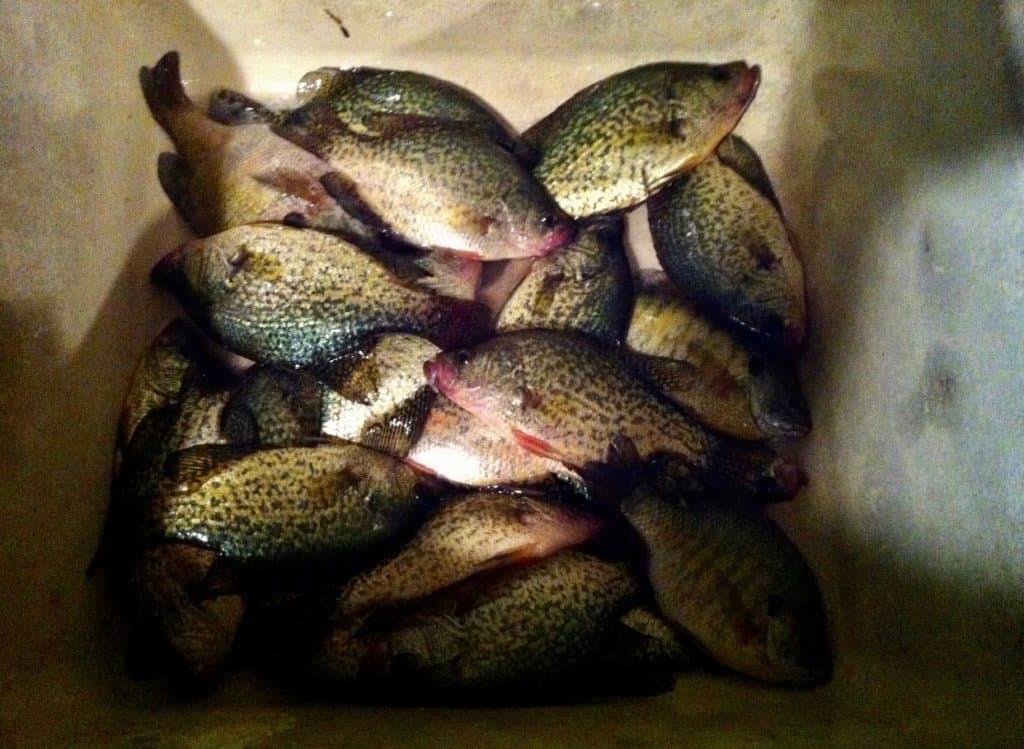
During the winter months (December, January, and February), crappie will be in deeper water. Fishing from the bank can be challenging during the winter months depending on how deep the water is where you have access to fish.
Some good areas to fish from the bank during the winter include boat docks and river mouths. Boat docks will have deeper water since the area would have had to be dredged to build the docks.
Also, all the piers and wood pilings provide good structure for the crappie to live in. It is important to fish these man-made structure piles near boat docks to catch a lot of winter crappie.
If you can find a good spot on the bank to fish the mouth of a river or creek during the winter, do it! Baitfish, like shad, will school up in these areas in search for the most comfortable water temperatures.
Crappie will always follow baitfish, and it is no different during the winter. River mouths often provide deeper water due to the flowing current and are a great place to catch crappie during the winter months.
Crappie tend to be more lethargic and less aggressive the colder the water temperature gets. As an angler, it is important to present your lures and bait in the same manner as natural crappie prey behave. Just like crappie, shad and other baitfish also move at a slow pace in the winter.
When you are fishing for crappie in the winter, it is important to be extremely patient and to work your lures very slowly. Fish the structure at the right depth and let your jig sink at a very slow speed.
Take your time working the lure in and out of the structure to get more bites. A jig that is going to fast does not look natural during the winter.
Although they are lethargic, crappie still eat during the winter, and using a slow presentation of your jig in a structure pile is the best way to catch them.
Spring
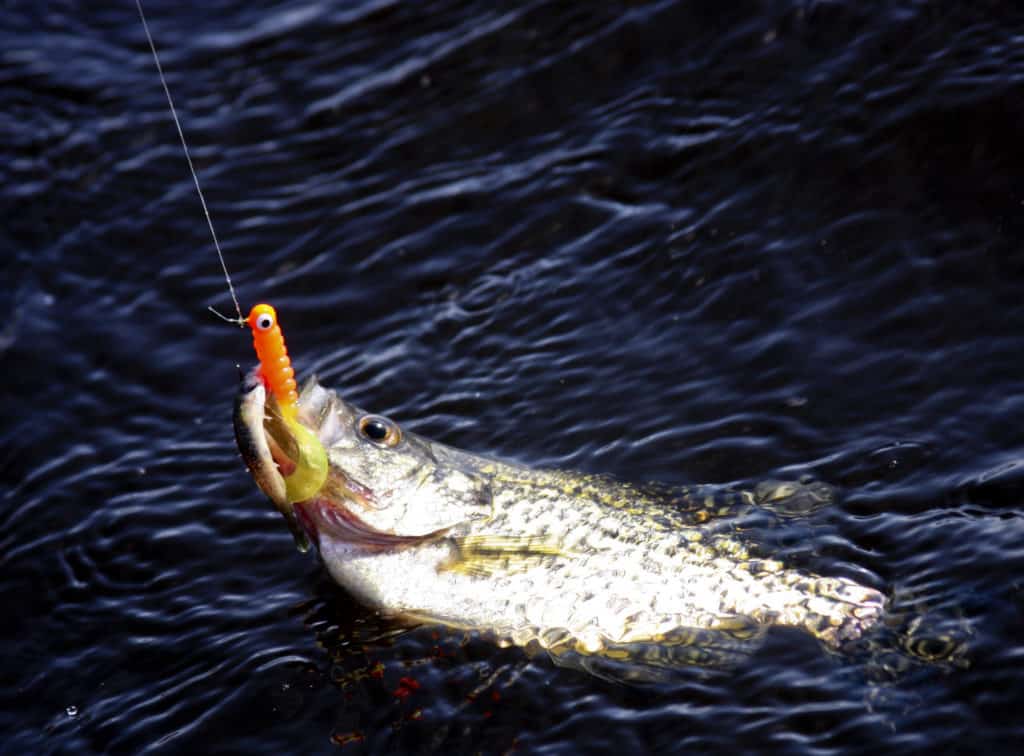
The spring months are a great time to catch crappie, especially from the bank. This is because crappie generally spawn when the water temperature reaches 60 degrees or higher.
Depending on where you are located in the US, the months of March, April, and May are when you will find spawning crappie.
The bank is a great place to fish from during the crappie spawn because the fish move into shallow water to make their beds. You will be at an advantage fishing from the bank because you will be able to cast into spots that fishermen in boats will not be able to reach.
It is important to be quiet when arriving at your fishing spot. Spawning crappie are on edge and if you make too much noise or create shadows, they are likely to get scared off.
When fishing for crappie during the spawning season it is important to be on the lookout for their beds. Crappie like to make their beds in low lying areas with gravel or sandy bottoms that are protected by the waves. Look for pockets and cuts from the main channel to find these protected areas.
Once you locate these areas, look for submerged structure like fallen down trees, brush, or even boat docks. Crappie love to bed up in highly sheltered environments because their eggs are protected from the weather.
Make sure you target these areas the next time you are fishing for crappie during the spawn and you will surely catch more fish.
Some of the best tactics to catch crappie during the spring months include using jigs and live minnows under a bobber. When jigging for crappie during the spawn, I like to attach colorful curly-tailed plastics.
Using curly-tailed jigs with vibrant colors, like chartreuse or milktreuse, are effective because they will catch the crappie’s attention.
The water clarity near crappie beads are often muddy from the fish fanning the beds with their tails, so using these bright colors are important.
Work these jigs up and down the submerged structure at a steady pace. When you see your line go limp, set the hook because you have yourself a crappie on the line!
You will always find success using live minnows underneath a bobber during the crappie spawn. Live minnows are usually the best bet for catching these spawning fish because you are using their natural prey.
All you need are some good casts that are near some submerged structure, and you will catch some spring crappie!
Summer
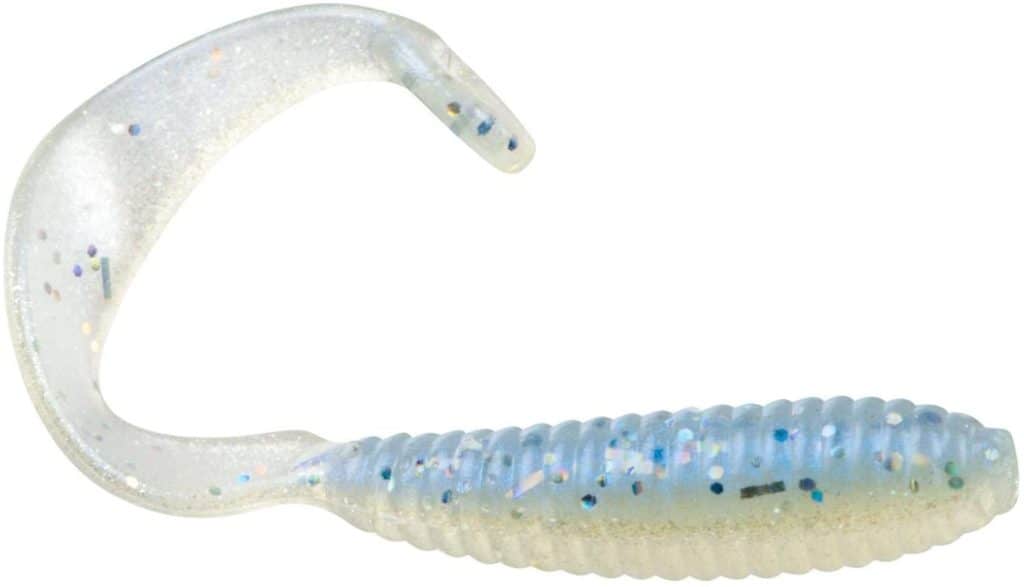
Catching crappie in the summer is a bit more difficult than catching them in the spring. This is because as the water temperatures get to 75 degrees and higher, the fish move to deeper water.
As an angler who is fishing from the bank, this could cause issues for you if you cannot make casts into deeper water.
As the crappie move to deeper waters, they look for underwater shelter for protection and cover. It might be hard to locate these submerged areas of cover while fishing from the bank.
In some cases, the fish could be living in a fallen down tree that is 10 to 20 feet deep, and there is no way for you to know that the fish are there.
For this reason, fishing with live minnows underneath a bobber is ideal for summertime fishing. crappie still have big appetites in the summer, so casting out their favorite thing to eat will give you a higher chance of locating where the fish are at.
Cover a lot of area while you are casting to find where the crappie are located. Once you start getting consistent bites it is safe to say that you found some underwater structure.
Personally, I believe that fishing with jigs and artificial lures are more satisfying than using live bait. Once I get a few bites and I think that I found some underwater structure, I will switch from a live minnow to a jig.
Some of my favorite colors to use during the summer are june bug blue and blue ice. A good rule of thumb to remember when you are choosing which color jig to use is to use darker colors in dirtier water and lighter colors in cleaner water.
While you will find more crappie in deeper water during the summertime, there are some situations when you can still catch them in the shallows.
If you are fishing in early summer and the water temperature is around 70 degrees, you will still be able to catch crappie using the springtime techniques mentioned above.
In early Summer, crappie will move to the shallows to chase the spawning shad. If the water temperature was cooler throughout the spring, there is a good chance that shad are spawning late.
Summer is a great time to catch crappie. While fishing from the bank it is important to first locate where the fish are burrowed. Use live minnows under a slip bobber to get a good understanding of where the fish are.
If you decide to switch to a jig, make sure to choose the correct color based on the water clarity. Don’t be afraid to mix it up and try different things. As always, knowing the lake or river that you are fishing is always a plus.
Fall
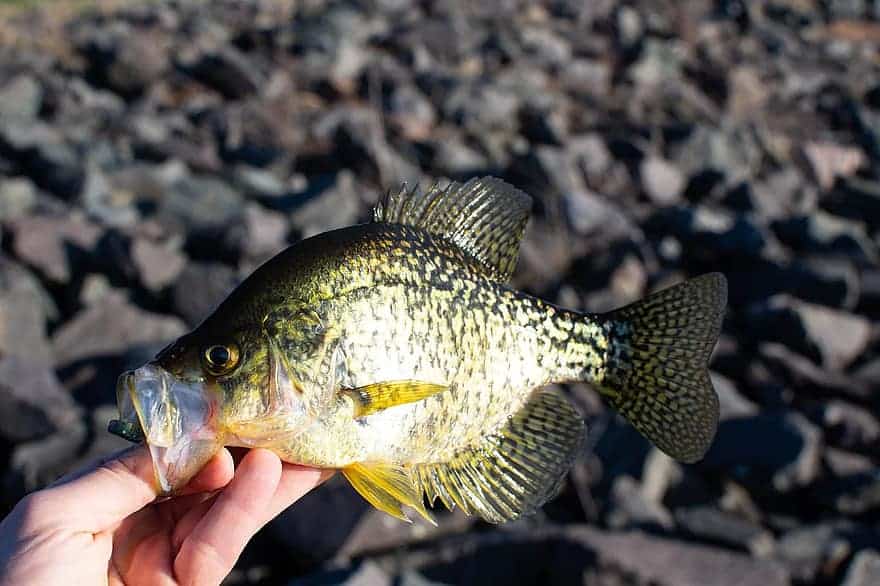
The fall months are a great time to fish for crappie from the bank. This is because as the water temperature gets cooler the fish move from their deep-water brush piles to structure in the shallows.
So instead of facing the challenge of long casts to find deep water, bank anglers can locate crappie very close from the shore with shorter casting.
The fall also is a great time for catching bigger fish. Crappie have had about 6 to 7 months to grow from the spawn in the spring. When you are fishing in the gall, it is a good idea to use bigger jigs.
The bigger the bait the bigger the fish, and this applies to crappie as well. I like to use a 1/8 oz round jig head with a curly tail plastic lure when I am targeting the bigger crappie in the fall months.
When locating crappie who are beginning to move into the shallows it is important to find the cover that the fish will be moving in to. Remember that the fallen down tree and the boat docks that you had no success fishing in the dead of summer now has a better chance to be holding some fish in the fall.
Once you locate the structure, work your jig at different depths. These transitioning crappie will be at different depths depending on the water temperature, so adding some depth diversity to your casts will help you locate the fish faster.
What are the two best techniques to catch crappie from the shore?
The most sure-fire way to catch crappie from the shore is to use a live minnow underneath a slip bobber. Using live bait will always be your best bet to catch crappie, especially during the middle of winter and summer when the fish are acting lethargic.
If you are fishing a popular lake or river that has heavy fishing pressure, using live bait will give you a better chance to catch crappie than the other fisherman who are using jigs.
If using live bait is not an option or does not appeal to you, crappie anglers will find tremendous success using a curly-tailed jig. 1/8 oz and 1/16 oz jig heads are two of the best jig head sizes to use, depending on the depth of the water that you are fishing.
When choosing which color curly tail to use, remember that it all depends on the water clarity. The cleaner the water the more natural and lighter-colored lures should be used.
When the water is murky it is best to use darker colors because they will be more visible to the fish. Make your casts at different depth levels to locate the fish.
Using a jig to catch crappie is the most enjoyable way to fish in my opinion, and it produces big fish.
How to use a bobber to catch Crappie from the bank
Using a bobber when fishing from the bank is one of the most effective ways to catch crappie. You can use live minnows or jigs when using a bobber.
There are two basic bobbers to consider:
The Stationary Bobber
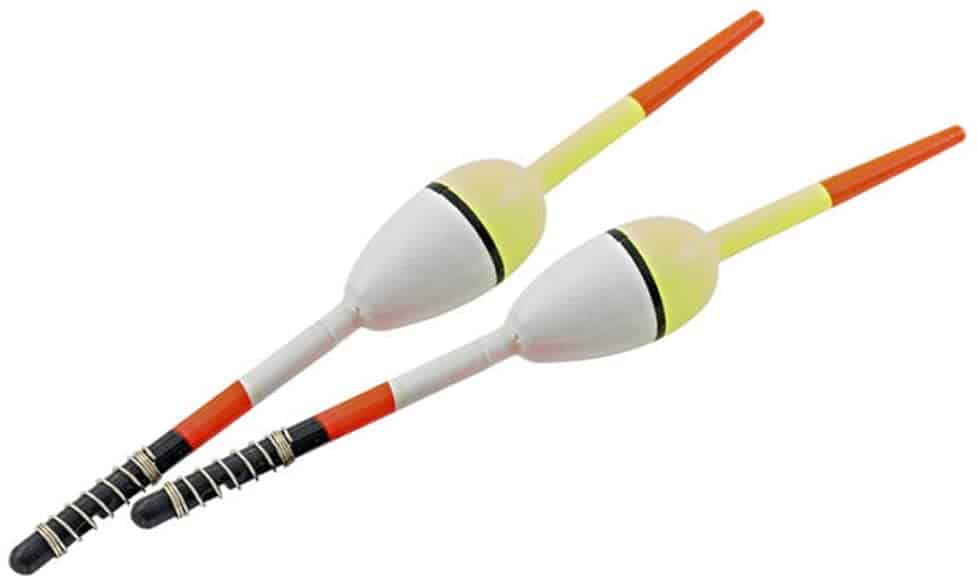
A stationary bobber is the most effective when you have a good idea of the depth that the Crappie are at. This bobber allows your bait to remain at a consistent depth when you are popping a twitching the line.
The Slip Bobber
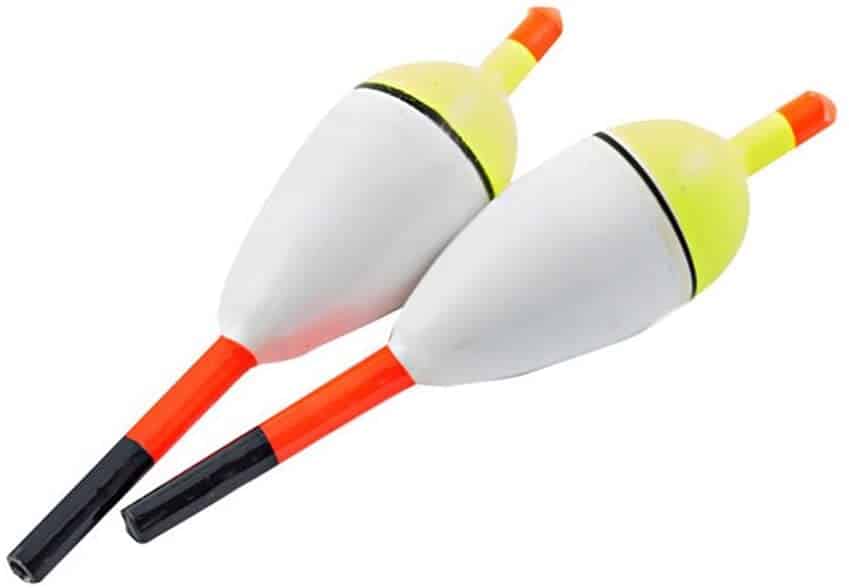
A slip bobber allows the bait to reach whatever depth you wish. This technique is great for locating fish who are transitioning from the deeper waters to the shallows.
Crappie live in different depths depending on the water temperature and using a slip bobber allows anglers to fish all depths.
Bobbers are the most effective when they are cast into the middle of brush. If you make a good cast, just let your bait sit for a moment because hungry crappie will often bite as soon at the bait enters their area. Once you see that bobber go under or move from side to side, set the hook!
How to use a jig to crappie fish from the bank
A jig is a great way to catch crappie while fishing from the shore. You do not need to worry about buying live minnows and keeping them alive. Simply stock up on some good tackle and head to your spot.
Jigs can be used with or without a bobber. When you use a jig without a bobber it gives you more versatility to reach different depths and to work the bait more effectively through cover. Using a bobber is a great when you know exactly where the fish are, and you want a consistent presentation of the bait.
Selecting the best weighted jig head is important when jig fishing. I like to use a 1/8 oz weight when fishing in deeper water, and a 1/16 oz weight when casting in the shallows.
A curly-tailed lure is the best thing to attach to the jig when fishing for crappie. Use a color like chartreuse when fishing in clean water and a color like june bug blue when in dirty water.
5 best tactics for catching crappie from the bank
Fish Structure
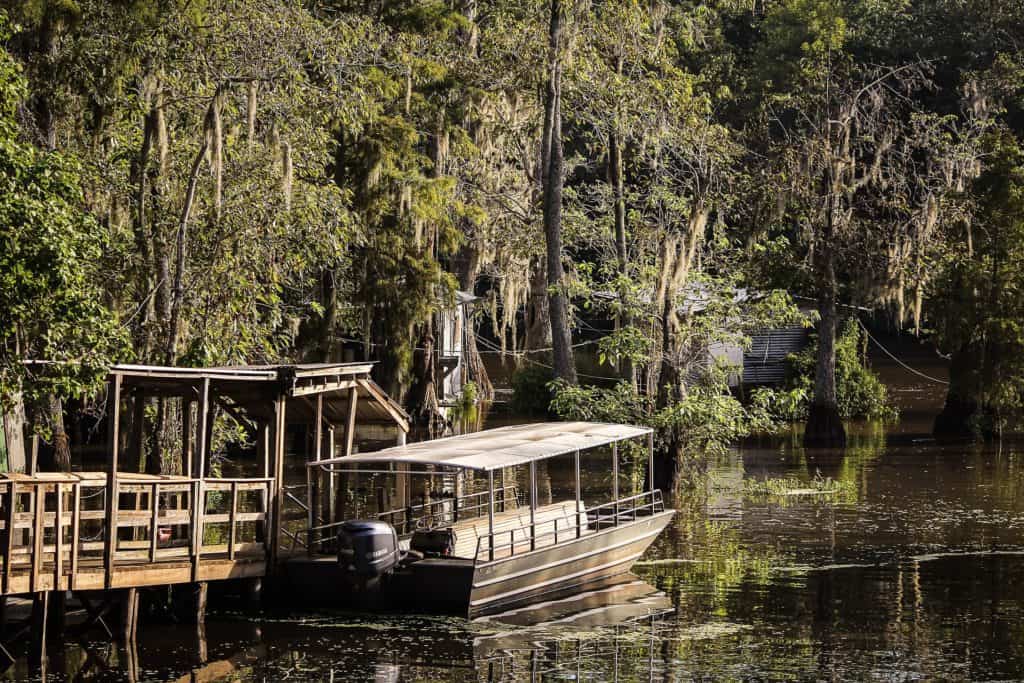
Crappie live in areas that have submerged structure like fallen down trees, brush, and boat docks. Target structure around the bank and you will catch more crappie.
Know the Water Temperature
Having a good understanding of the water temperature will help you locate the fish. Crappie move from the shallows to deeper water depending on the temperature of the water.
Use a Jig
One of the most effective ways to catch crappie is to throw a curly-tailed jig. Work these jigs at different depths through cover and you will catch some fish.
Use live minnows
In the middle of summer and in the dead of winter, crappie become lethargic. Using live minnows during this time will improve your chances of catching crappie.
Fish the Spawn
Crappie usually spawn in March, April, or May depending on what part of the country you live in. The spawn in the best time to catch crappie because they are the most aggressive.
Conclusion
Crappie are one of the best fish to catch from the bank. Be sure to target structure in the area using jigs and live minnows.
Having a good understanding of how crappie behave due to the water temperature will help you chose the right baits and locations to fish.
Crappie are a blast to catch, and the best to eat, so have fun!

